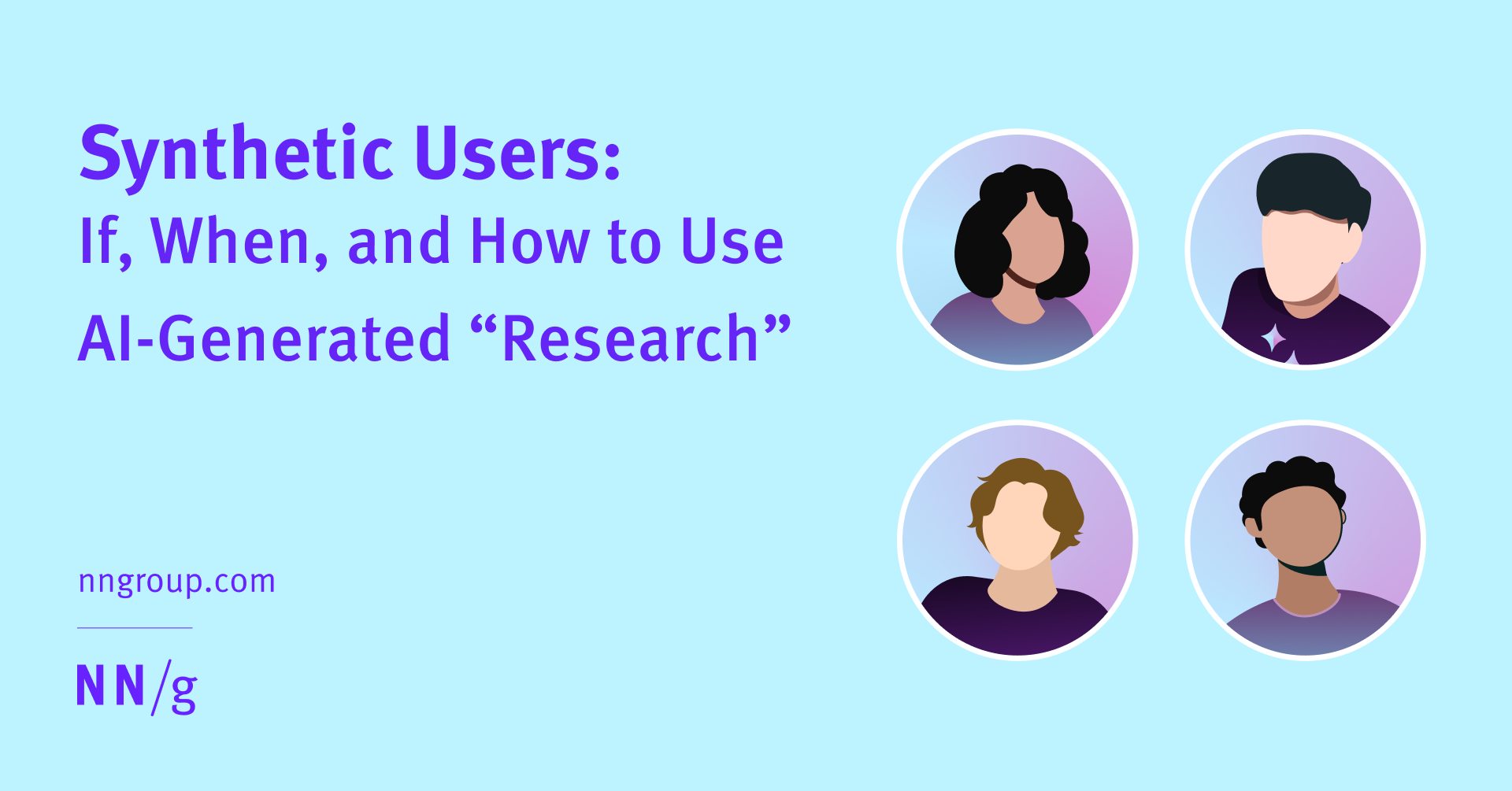Synthetic Users: If, When, and How to Use AI-Generated “Research”

Synthetic Users: If, When, and How to Use AI-Generated “Research”
What Are Synthetic Users?
- Definition: Synthetic users are AI-generated profiles that mimic user groups, providing artificial research findings without studying real users.
- Characteristics: They express simulated thoughts, needs, and experiences, based on large language models (LLMs) trained on vast amounts of data about people.
Use Cases for Synthetic Users
- Limited Use: There are a few circumstances where synthetic users might be useful, such as when real users are inaccessible or when quick insights are needed.
- Risk: Relying solely on synthetic users can lead to biased or inaccurate research outcomes, as they lack the authenticity of real user input.
Importance of Real User Research
- Critical Role: Real users provide invaluable insights, emotions, and behaviors that cannot be replicated by AI-generated users.
- Validation: Authentic user research helps in understanding genuine user needs, preferences, and pain points for product development.
Guidelines for Using Synthetic Users
- Supplementary Tool: Consider using synthetic users as a supplement, not a replacement, to traditional user research methods.
- Cross-Validation: Validate findings from synthetic users by incorporating real user feedback, ensuring more accurate and reliable results.
Conclusion
- Balanced Approach: While synthetic users have some utility, real user research remains essential for comprehensive and reliable insights into user behavior and preferences.
- Ethical Considerations: Exercise caution and transparency when using AI-generated data to ensure the integrity and validity of research findings.
